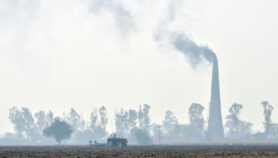By: Athar Parvaiz
Send to a friend
The details you provide on this page will not be used to send unsolicited email, and will not be sold to a 3rd party. See privacy policy.
Attending a panel discussion on a book published by the International Institute for Environment and Development (IIED) on dryland climate variability was an edifying experience.
The event on 21 August, at the Centre for Studies in Science Policy (CSSP) of the prestigious Jawaharlal Nehru University, New Delhi, did justice to the book Valuing Variability – New Perspectives on Climate Resilient Drylands Development which challenges the long-standing notion that drylands are naturally vulnerable to food insecurity and poverty.
According to the volume, working with climatic uncertainty — rather than seeking to control it — can improve agricultural productivity in arid and semi-arid regions. The participants asserted that systems are more climate-resilient when they are in consonance with the natural diversity within the systems and when they use practices unique to the local area.
Policy and support systems, the panellists noted, have become rigid with the advent of the chemical-based and genetics-led green revolution.
Speakers recalled how certain schemes to improve the condition of drylands have failed in parts of India like Gujarat. A case in point was the introduction of Prosopis Juliflora for the conservation of grasslands in drylands through a World Bank funded project by the government in 1960s in India.
“These plants, which have proliferated in hundreds of thousands of hectares, are now being replaced through another World Bank funded project,” a speaker recalled to the amusement of listeners. He conceded, however, that institutional support is needed to deal with scales of risk that are beyond the reach of farmers.
Another speaker argued that the variability found in dryland environments is structural; and not going away anytime soon. Variability by definition, he said, means that there can’t be a standard or permanent solution for drylands.
According to the panellists, the new understanding of the drylands demands select production strategies that take into account climate variability.
In India, one panellist said, ill-advised interventions like application of modern-day knowledge and technologies and high yielding variety seeds and chemical inputs in semi-arid areas where rain-fed agriculture is practiced, can prove costly. It is true, he said, that around 68 per cent of the 142 million hectares of arable land is rain-fed and accounts for a significant amount of food and cash crops. India, he pointed out, is also a major producer of meat from dryland-herded sheep and goat that total 22,608 million tonnes of exports annually.
Drylands also support the country’s dairy industry in a significant way. In the Banni dry-land of Gujarat, a constant refrain among farmers is that it costs more to buy a high milk-yielding Banni buffalo than the Nano, India’s low-priced car which costs around 120,000 Indian rupees. Moreover, while a Nano is fit for the scrapyard car in ten years, a Banni buffalo would, in the same time, have produced four buffalo calves as bonus.
Athar Parvaiz is the SciDev.Net correspondent in Srinagar. He specialises in reporting on climate change and environmental issues.
This article has been produced by SciDev.Net's South Asia desk.














